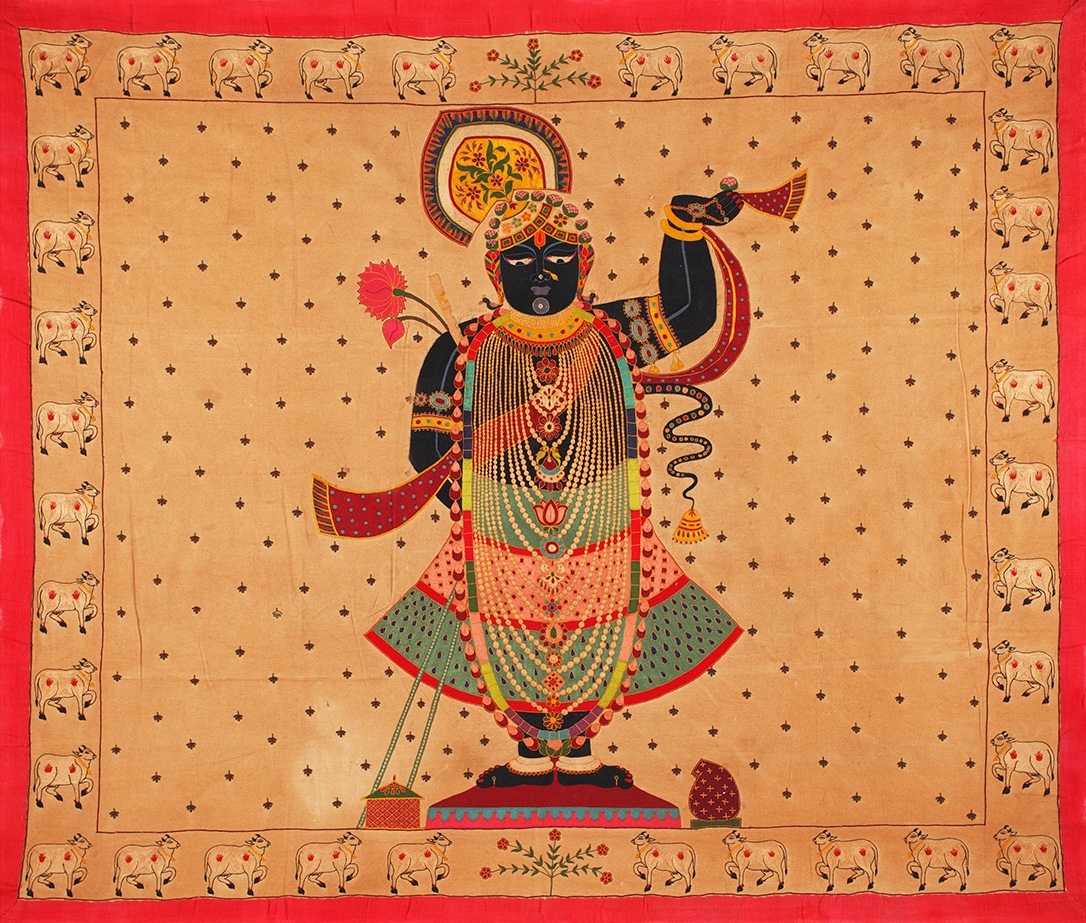
Shrinathji, attributed to the workshop of Gulshan, 20th century © Sarmaya Arts Foundation 2015.2.169
Pichwai paintings usually do not carry a signature by the artist who created them. These textile tradition is synonymous with the temple town of Nathdwara in Rajasthan, where ateliers and families have been practising the art for generations. For them, the act of painting a Pichwai is both work and worship. That hasn’t changed, even though much else about this art form has.
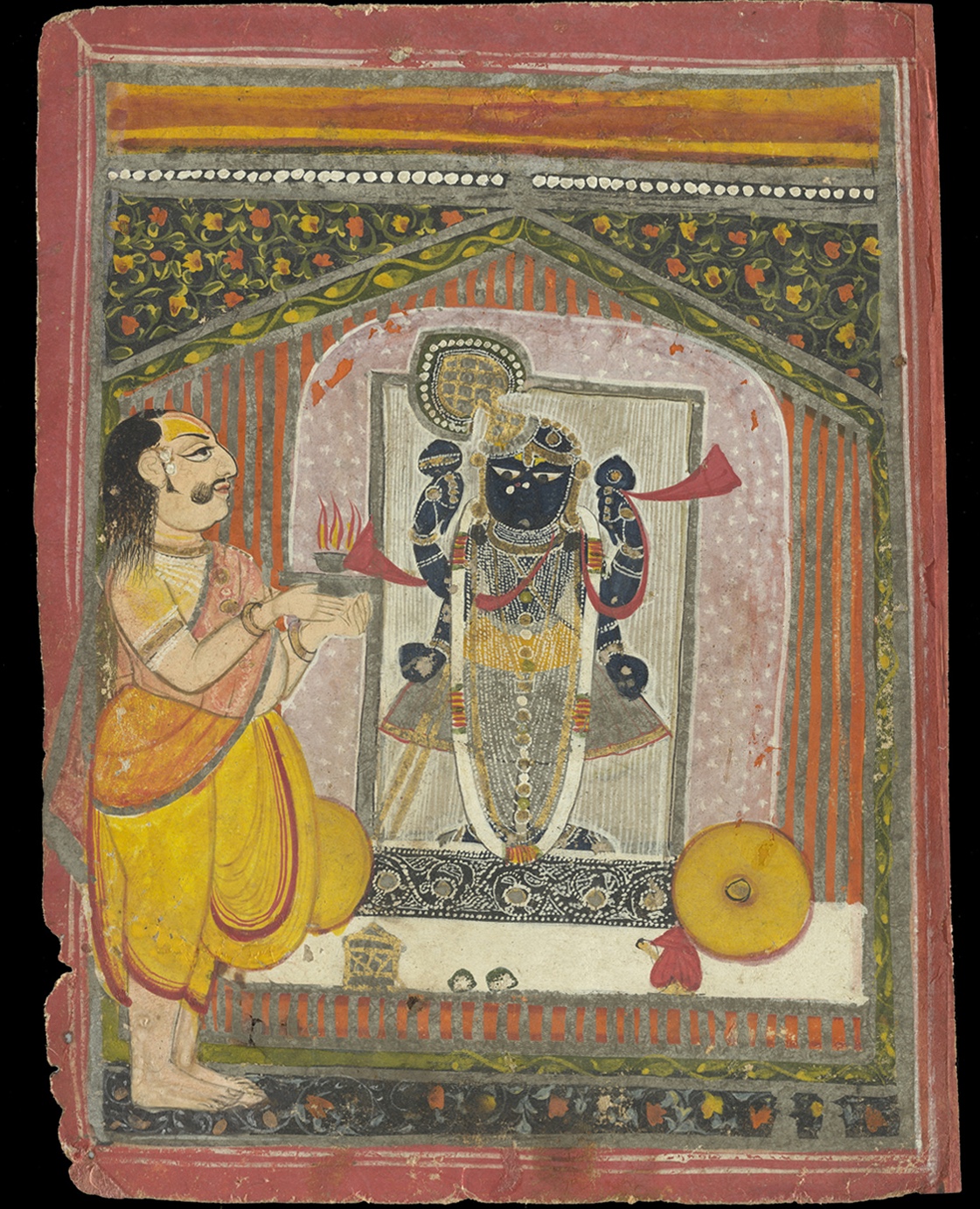
Miniature of Shrinathji, unidentified artist, 19th century © Sarmaya Arts Foundation 2021.15.2
Pichwai, literally translating into background or backdrop, historically refers to the cloth hung behind the idol of the 8-year-old Lord Krishna aka Shrinathji inside the sanctum sanctorum. These paintings were elaborate in their ornamentation but did not contain a depiction of the actual deity, their function being only to offer a beautiful landscape dominated by the serene central figure of the Lord.
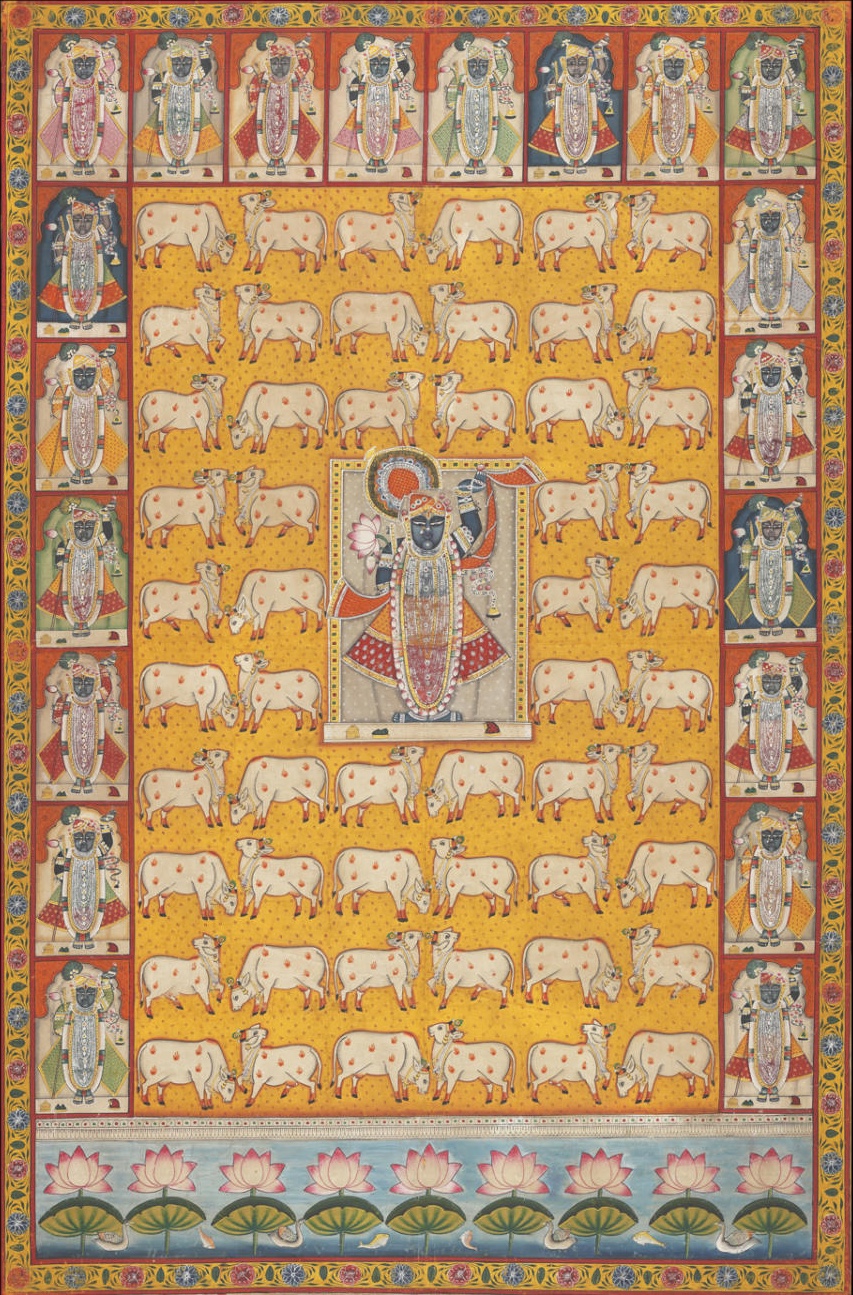
Gopashtami Pichwai (20 Shringars), unidentified artist © Sarmaya Arts Foundation 2018.14.14
Pichwais were traditionally commissioned by temples, not patrons or kings, because they were required to meet certain physical and aesthetic specifications. Early Pichwais were monochromatic with simple floral designs. In time, a parallel commercial market emerged for these cloth paintings. Once the painting left the sanctum and began to travel far and wide as a souvenir, its form had to change. The figure of Shrinathji was added in the centre, surrounded by scenes from the mythology of Lord Krishna. Pichwais went from being functional textiles to objects of worship and works of art in themselves. The background became the foreground, but the name stayed.
The art of Pichwai is shaped by the philosophy of the Vallabha sampradaya or sect. Founded in the 15thcentury by Vallabhacharya, the sect worships the young Lord Krishna as Shrinathji. Devotees believes the young god spoke to their spiritual leader about matters philosophical and practical: Shrinathji shared his views on the workings of the shrine, sometimes demanding a temporary structure to be built over him, while at other times complaining that the food served to his idol was too hot and had burned his tongue! These conversations shaped the sampradaya’s rituals, as well as its attitude towards the deity: Lord Srinathji is not a god isolated in his sanctum, but a god who lives among his people; he dwells not in a temple but inside a mansion or haveli, where he is cared for as a living being who requires clothing, food and shelter.
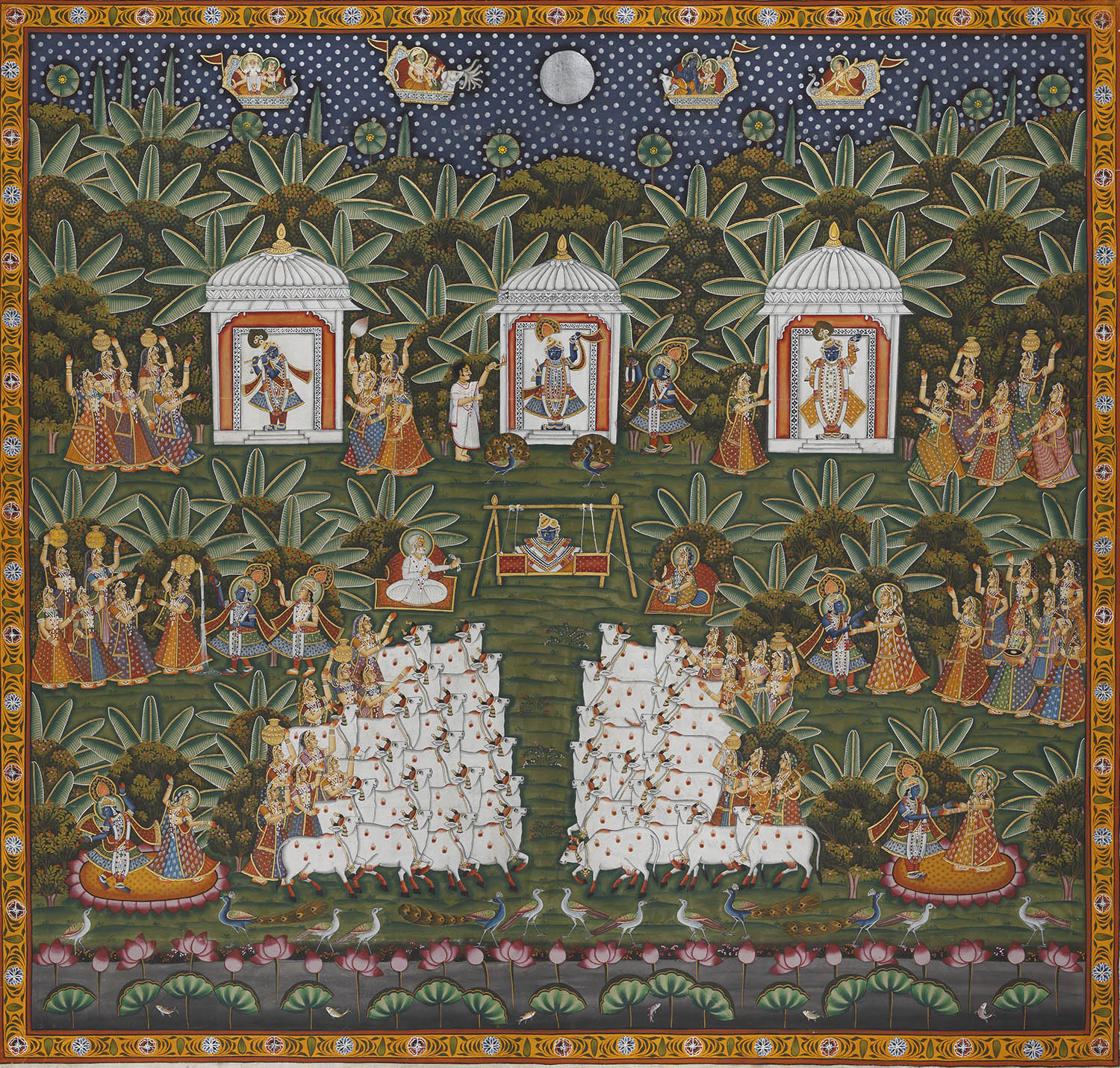
Janmasthami Pichwai, stone colour on cloth, Narendra Singh © Sarmaya Arts Foundation 2015.2.173
The making of Pichwais is part of the seva (acts of service) required by the Vallabha sampradaya. The town of Nathdwara is home to families and workshops that have been making Pichwais for generations. Many of them moved with the sect from the Vraj region (present-day Uttar Pradesh) to Nathdwara, while other artists came seeking opportunities from royal courts in Rajasthan.
Of these painting families, two groups stand out: the Jangir Brahmins and Adi Gaur Brahmins. Both believe their connection with Shrinathji dates to the time of the sect’s migration to Nathdwara. Another major group working on Pichwais are the Mewaras. While each group seems to claim a competing history from the other, their work reflects a structure, order and style distinctive to the Nathdwara school of painting. The influence of different styles of Rajasthani painting, from the Rajputana courts of Mewar, Kota and Kishangarh, can be seen in the finer details of a Pichwai.
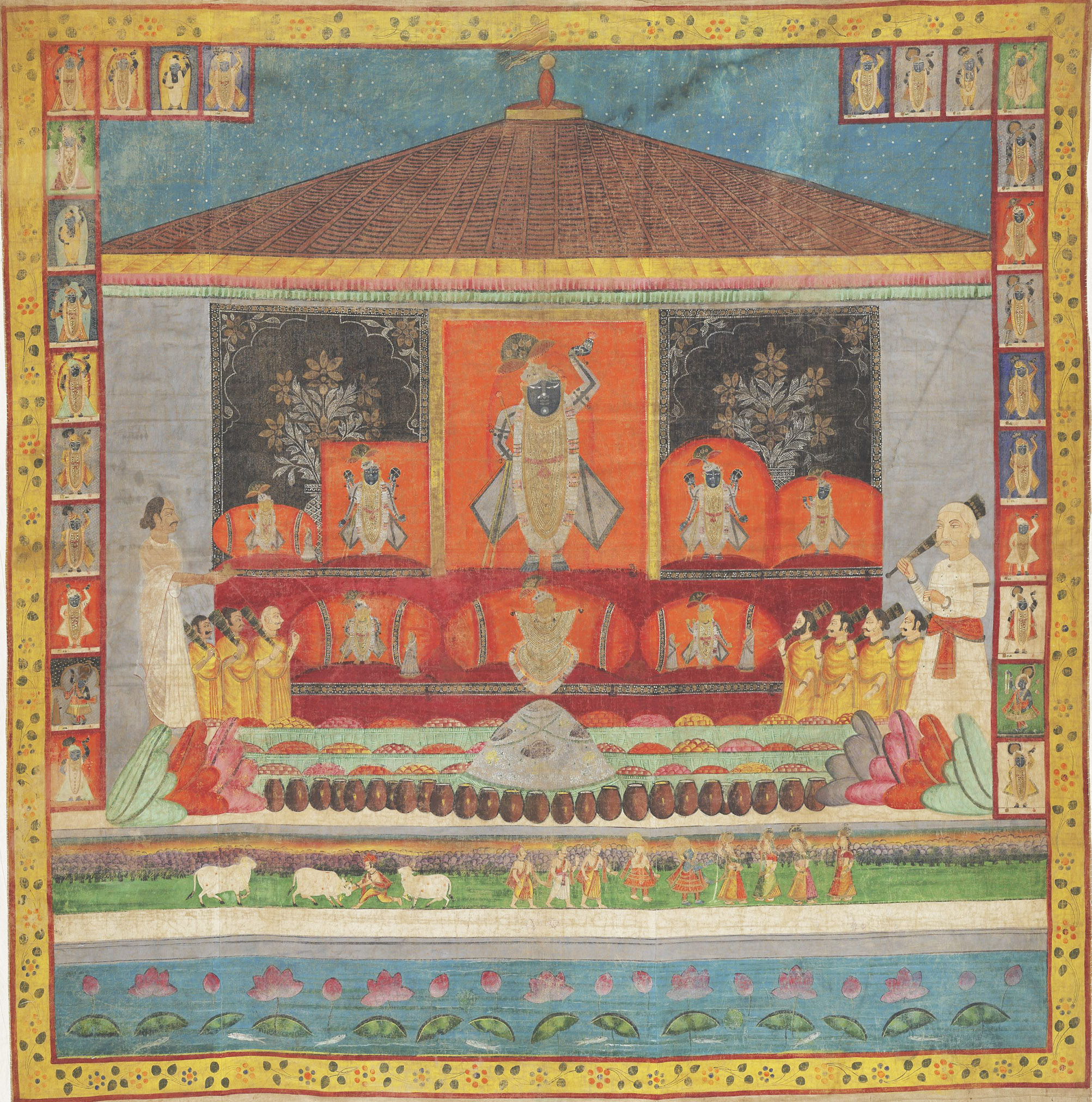
Aankoot Saat Swaroop Pichwai, gouache on cotton cloth © Sarmaya Arts Foundation 2018.14.13
Nor is Nathdwara the only centre for Pichwai painting; the art is also practised by families and in the workshops of Burhanpur, Madhya Pradesh and Machilipatnam, Andhra Pradesh. What began as a utilitarian item representing the singular philosophy of a 16th-century religious sect has evolved into a form that transcends the specifications of region and faith. From his painted haveli, the young Shrinathji now smiles serenely at an expanding artistic universe of Pichwai devotees.
References
Shah, A.B. (2023). Colours of Devotion: The Legendary Paintings and Textiles of the Vallabha Sampradaya, 1500-1900. Niyogi Books.
Goswamy, B.N. (2014). Wondrous Images: Krishna Seen as Srinath-ji. D.S Mehta on behalf of Sarabhai Foundation.
Listopad, J. (2000). In the Service of Kṛṣṇa: Paintings from Nathdwara under Dāmodar II and Govardhanlāl in the Los Angeles County Museum of Art. Ars Orientalis, 30, 115–126.
Joshi, S. (2017, 12 June). Nathdwara Paintings: Shrinathji Cult, Haveli Traditions and Bazaars. Sahapedia.
Jaswal, M. Shreenathji Temple Architecture: First Impressions. MeMeraki.



